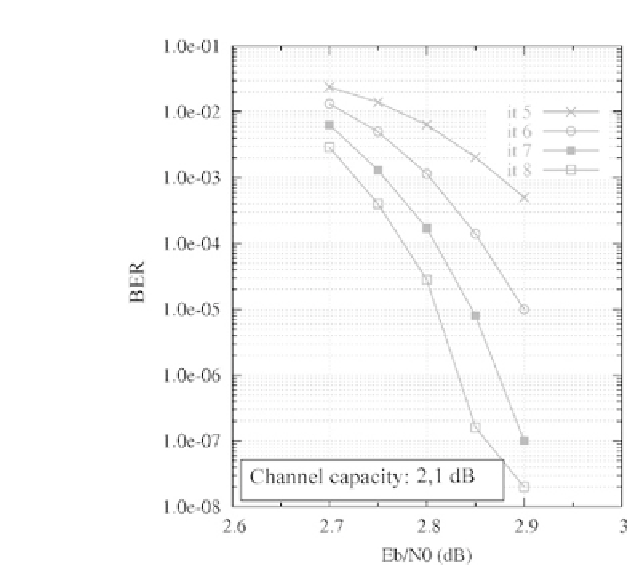Cryptography Reference
In-Depth Information
Figure 10.7 - BER as a function of the signal to noise ratio
E
b
/
N
0
of the 16-QAM
TTCM with 16 states using the RSC code of Figure 10.5. Transmission over a Gaussian
channel. Spectral eciency
η
=2
bit/s/Hz. 2
×
16,384 information bits. MAP decoding
algorithm. Curves taken from [10.1].
at reception whereas the redundancy bits, coming from the two elementary
encoders, are used by only one of the two decoders.
On the other hand, the binary elements contained in a modulated symbol
are not, in general, all protected identically by the modulation. For example,
in the case of PSK or QAM modulation with Gray encoding, only modulations
with two or four points offer the same level of protection to all the bits of a same
symbol. For higher order modulations, certain bits are better protected than
others.
As an illustration, consider a 16-QAM modulation, mapped independently
and in an analogue manner on the in-phase and in-quadrature axes by Gray
encoding. The projection of this modulation on each of the paths is amplitude
shift keying (ASK) with 4 symbols (see Figure 10.11).
We can show that, for a transmission over a Gaussian channel, the error
probabilities on the binary positions
s
1
and
s
2
, given the transmitted symbol
(
±
3or
±
1), are expressed in the form:



